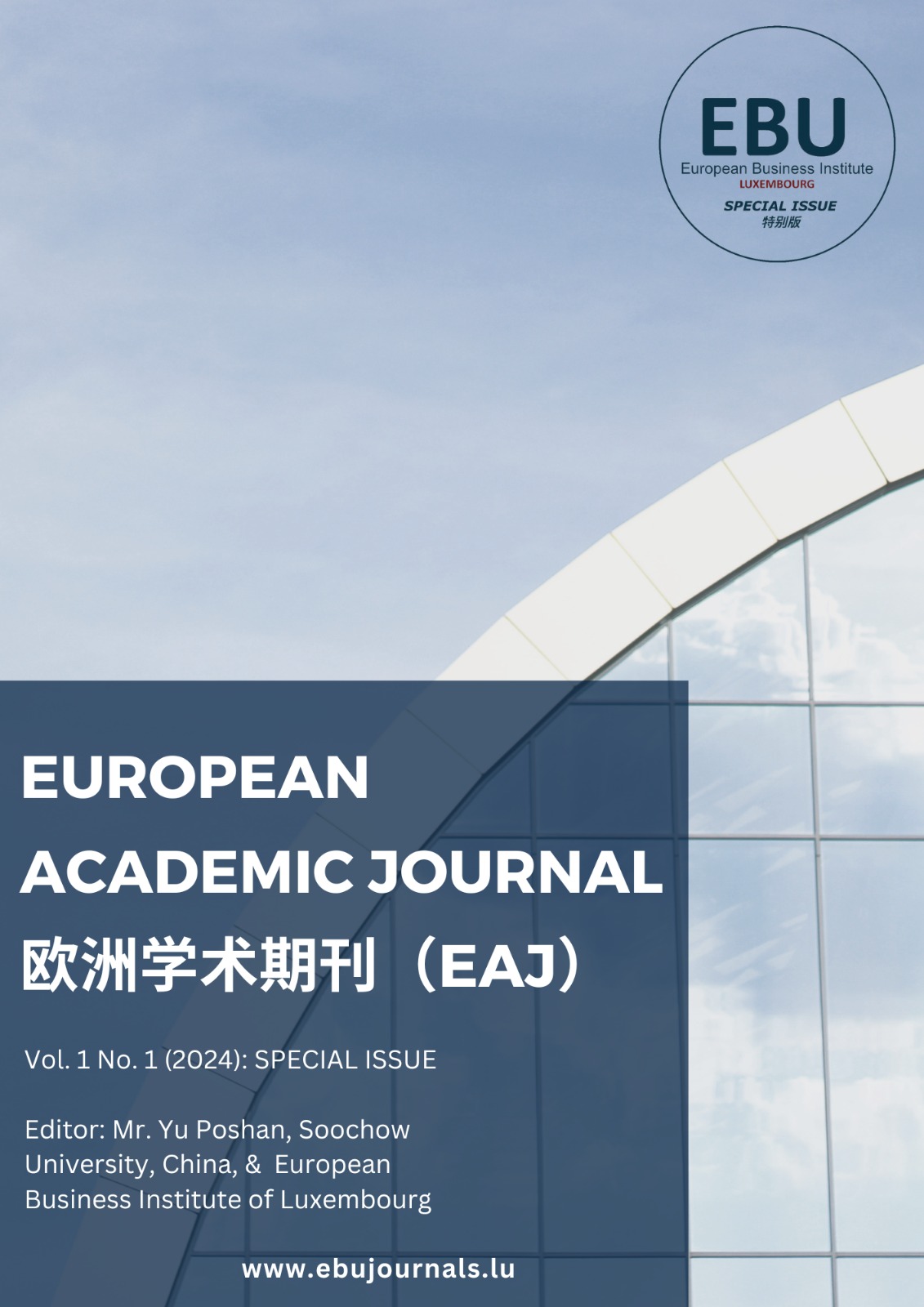Deployment of Blockchain Technology on the Banking Industry in China: A Policy Review Study
Keywords:
blockchain, China, the banking industry, policy review, application, finance, settlement, ICBCAbstract
This paper focuses on exploring the development of BC in the banking industry in China. Due to the Great Firewall and policy factors, the development of blockchain in China has not been synchronous with the rest of the world. However, China has been gradually researching the application of blockchain in the banking sector. To investigate the factors that have led to a faster pace of development in blockchain in the banking industry in the past five years, this paper employs the methods of policy review and case study. The analysis findings indicate that blockchain in the banking industry in China is currently primarily applied in six major modules: supply chain financing, cross-border financing, cross-border settlement, identity verification (KYC), fraud prevention and security, and digital currency. The driving factors behind the development of blockchain in the Chinese banking industry are mainly twofold: the encouragement and guidance of government policies and meeting the needs of the banking business model to enhance the quality of its assets and maintain social productivity.
References
Bai, C., & Sarkis, J. (2020). A supply chain transparency and sustainability technology appraisal model for blockchain technology. International Journal of Production Research, 58(7), 2142-2162. https://doi.org/10.1080/00207543.2019.1708989
Berentsen, A., & Schär, F. (2018). A short introduction to the world of cryptocurrencies. FRB of St. Louis Working Review, 100(1), 1-16. https://doi.org/10.20955/r/2018.1-16.
Crosby, M., Pattanayak, P., Verma, S., & Kalyanaraman, V. (2016). BC Technology: Beyond Bitcoin. Applied Innovation, 2(6-10), 71.
GONG Qiang, BAN Mingyuan, & ZHANG Yilin. (2022). Blockchain, Enterprise Digitalization, and Supply Chain Finance Innovation. China Economic Transition (CET), 5(2), 131–158. https://doi-org-s.elink.xjtlu.edu.cn:443/10.3868/s060-014-022-0008-3
English, M., Auer, S., & Domingue, J. (2016). Blockchain technologies & the semantic web: A framework for symbiotic development. In Computer Science Conference for University of Bonn Students (pp.47-64).
Hamdi, A., Fourati, L., & Ayed, S. (2023). Vulnerabilities and attacks assessments in blockchain 1.0, 2.0 and 3.0: tools, analysis and countermeasures. International Journal of Information Security, 1-45. https://doi.org/10.1007/s10207-023-00765-0
Heggie, R. (2022). Virtually Limited: Chinese New Religious Movements, the Great Firewall and the Case of The Church of Almighty God. Nova Religio: The Journal of Alternative and Emergent Religions, 25(4), 32-63. https://doi.org/10.1525/nr.2022.25.4.32
Kour, M. (2023). Blockchain Technology Changing Landscape of Banking Industry. In 2023 2nd International Conference on Applied Artificial Intelligence and Computing (ICAAIC) (pp. 1212-1216). IEEE.
Kwok, S., Omran, M., & Yu, P. (2024a). Audit Digitalization, Do-Calculus, and Professional Judgment: A Practical Evidence From China. In S. Kwok, M. Omran, & P. Yu (Eds.), Harnessing Technology for Knowledge Transfer in Accountancy, Auditing, and Finance (pp. 1–25). IGI Global. https://doi.org/10.4018/979-8-3693-1331-2.ch001
Kwok, S., Omran, M., & Yu, P. (Eds.). (2024b). Harnessing Technology for Knowledge Transfer in Accountancy, Auditing, and Finance (p. 279). IGI Global. https://doi.org/10.4018/979-8-3693-1331-2
Lai, R., & Chuen, D. L. K. (2018). BC- from public to private. In D. Lee & R. H. Deng (Eds.), Handbook of Blockchain, Digital Finance, and Inclusion (Vol. 2, pp. 145-177). Elsevier.
Luo, B., & Yang, C. (2023) AeRChain: an anonymous and efficient redactable blockchain scheme based on proof-of-work. Entropy. An International and Interdisciplinary Journal of Entropy and Information Studies, 25(2), 270. https://doi.org/10.3390/e25020270
Moll, J., & Yigitbasioglu, O. (2019). The role of Internet-related technologies in shaping the work of accountants: New directions for accounting research. The British Accounting Review, 51(6), 100833. https://doi.org/10.1016/j.bar.2019.04.002
Natoli, C., & Gramoli, V. (2016) The Balance Attack Against Proof-of-Work Blockchains: The R3 Testbed as an Example. Arxiv Preprint. https://doi.org/10.48550/arXiv.1612.09426
Raval, S. (2016). Decentralized applications: harnessing Bitcoin's Blockchain technology. O'Reilly Media, Inc.
Rozario, A. M., & Vasarhelyi, M. A. (2018). Auditing with Smart Contracts. International Journal of Digital Accounting Research, 18, 1-27. https://doi.org/10.4192/1577-8517-v18_1
Saberi, S., Kouhizadeh, M., Sarkis, J., & Shen, L. (2019). Blockchain technology and its relationships to sustainable supply chain management. International Journal of Production Research, 57(7), 2117-2135. https://doi.org/10.1080/00207543.2018.1533261
Taneja, H., & Wu, A. X. (2014). Does the Great Firewall isolate the Chinese? Integrating access blockage with cultural factors to explain Web user behaviour. The Information Society, 30(5), 297-309. https://doi.org/10.1080/01972243.2014.944728
Vinoth, S., Vemula, H. L., Haralayya, B., Mamgain, P., Hasan, M. F., & Naved, M. (2022). Application of cloud computing in banking and e-commerce and related security threats. Materials Today: Proceedings, 51, 2172-2175. https://doi.org/10.1016/j.matpr.2021.11.121
Winarski, T. Y. (2022). U.S. Patent No. 11,411,743. Washington, DC: U.S. Patent and Trademark Office.
Xu, H., Chen, J., Lin, H., & Yu, P. (2024). Investigating Dependence Structure Among Subsectors of Technology Stocks: A Vine Copula Approach. European Academic Journal - II, 1(1). https://eaj.ebujournals.lu/index.php/EAJ_II/article/view/90
Xu, H., Lin, H., & Yu, P. (2024). How IoT-Enabled New Energy Vehicles Enhance Sustainable Intelligent Transportation Systems in Smart Cities Under Unique Institutional Settings? Case Studies of China. European Academic Journal - II, 1(1). https://eaj.ebujournals.lu/index.php/EAJ_II/article/view/96
Xu, H., Wang, Y., Chen, J., Lin, H., & Yu, P. (2024). Evaluating the Predictive Power of the Energy-Related Uncertainty Index on Bitcoin Volatility. European Academic Journal - II, 1(1). https://eaj.ebujournals.lu/index.php/EAJ_II/article/view/89
Yu, P., Chen, J., & Xu, H. (2024). Sustainability and Stability: Asymmetric Time–Frequency Connectedness and Risk Spillovers Among EU–China ETSs, Clean Energy, Precious Metals, and Green Bonds. Preprints. https://doi.org/10.20944/preprints202406.0841.v1
Yu, P., Xu, H., & Chen, J. (2024). Can ESG Integration Enhance the Stability of Disruptive Technology Stock Investments? Evidence from Copula-Based Approaches. Journal of Risk and Financial Management, 17(5). https://doi.org/10.3390/jrfm17050197
Zheng, Z., Xie, S., Dai, H., Chen, X., & Wang, H. (2017). An overview of blockchain technology: Architecture, consensus, and future trends. In 2017 IEEE International Congress on big data (BigData congress) (pp. 557-564). IEEE.





